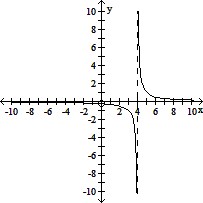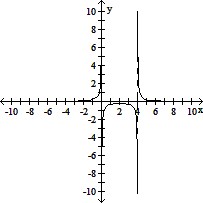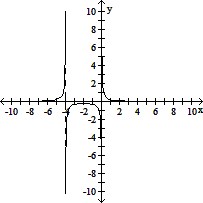For the following rational function, identify the coordinates of all removable discontinuities and sketch the graph. Identify all intercepts and find the equations of all asymptotes.f(x) = 

A. removable discontinuity at  ;
;
no x-intercept, no y-intercept;
asymptote x = -4
B. removable discontinuity at  ;
;
no x-intercept, no y-intercept;
asymptotes x = 4, y = 0
C. no removable discontinuities;
no x-intercept, no y-intercept;
asymptotes x = 4, x = 0, y = 0
D. no removable discontinuities;
no x-intercept, no y-intercept;
asymptotes x = -4 x = 0, y = 0
Answer: B
You might also like to view...
Provide an appropriate response.Simplify: 
A. 
B. 
C. 
D. 
A pair of similar triangles is given. Write the corresponding angles and the ratios of the corresponding sides.
A. ?L ? ?P
?M ? ?R
?N ? ?Q =
=  =
= 
B. ?L ? ?P
?M ? ?Q
?N ? ?R =
=  =
= 
C. ?L ? ?P
?M ? ?R
?N ? ?Q =
=  =
= 
D. ?L ? ?P
?M ? ?Q
?N ? ?R =
=  =
= 
The function graphed is of the form 

 or
or  where d is the least possible positive value. Determine the equation of the graph.
where d is the least possible positive value. Determine the equation of the graph.
A. sin x - 
B. sin 
C. cos 
D. sin 
Perform the indicated operations. Write the resulting polynomial in standard form.(4x2 + 4x + 7) + (2x2 + 4x + 6) - (5x + 2)
A. 6x2 + 3x + 11 B. 4x2 + 3x + 15 C. 4x2 + 3x + 11 D. 6x2 + 3x + 15